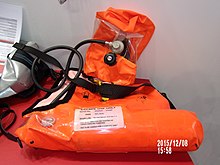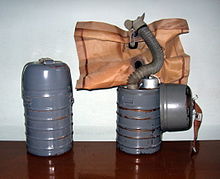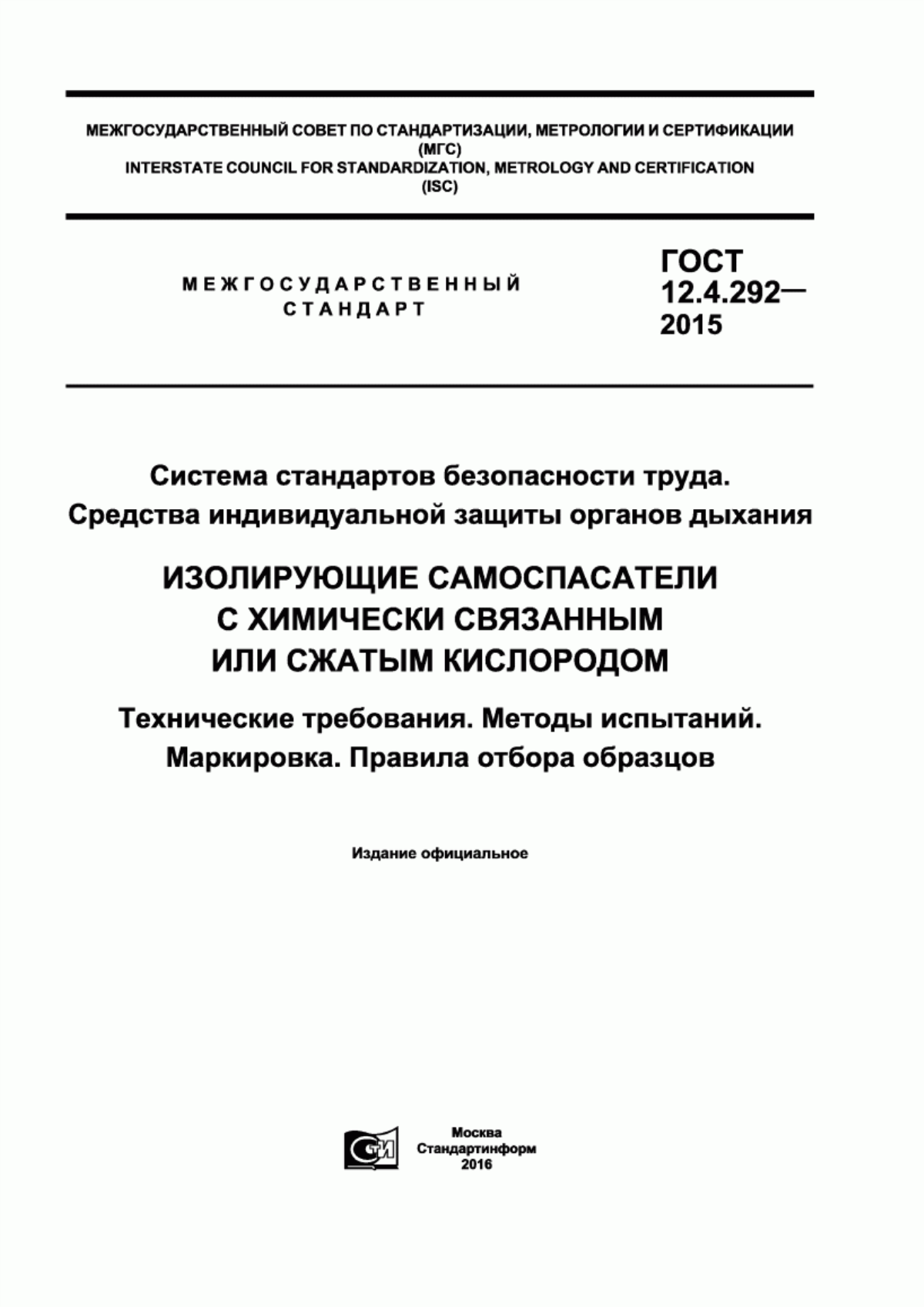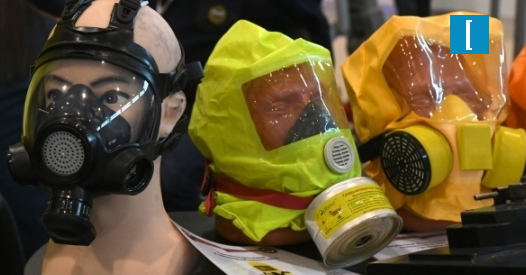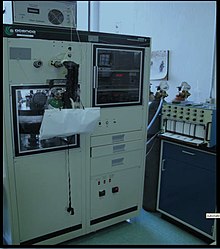Features and types
Self-rescuers are means that protect the respiratory system, eyes, as well as the skin of the face and neck of a person from combustion products and other toxic components. Visually, they look like hoods equipped with viewing screens to provide visibility to a person. For their manufacture, materials are used that are resistant to high temperatures and can reflect thermal energy. Self-contained self-rescuers prevent people from coming into contact with contaminated air. Their principle of action is designed to completely isolate the respiratory organs and eyes from the external environment. These PPE are equipped with a cylinder of compressed air or chemically bound oxygen (depending on the model). Through it, clean air is supplied to the mask.
Self-rescuers of the insulating type are of general and special purpose. The first models were created for use by civilians. They are designed for self-evacuation from smoky buildings in which a fire has occurred. Specialized protective equipment is used by specialists who are entrusted with the task of rescuing people in case of emergencies.
Advantages of insulating self-rescuers:
- reliable protection of the respiratory system both from carbon monoxide arising from fires and from any hazardous chemical compounds;
- the ability of materials to withstand high temperatures and not ignite;
- lack of heating, due to which the risks of damage to the skin are excluded;
- one size fits all (thanks to the use of elastic materials, the same PPE is suitable for both a child and an adult).
Self-rescuers of the insulating type are maintenance-free. They are quite effective and easy to use. However, they have some disadvantages. For example, such PPE is not repairable and is designed for one use. A significant disadvantage is limited action. The time for which most self-contained self-rescuers are designed varies from 20 to 40 minutes.
How to use and store?
In any disaster and even ordinary fires, people are killed or injured simply because they did not have a protective device at hand. And even if such devices are available and are in case of emergency, you need to study the rules of use in advance. To do this, you need to at least read the instructions. Indeed, in a state of panic, not every person is able to think clearly and clearly, especially women and children are able to panic. Therefore, basic knowledge will be useful to everyone.
First you need to remove the mask from the sealed bag. After inserting your hands into the hole, you need to stretch it, and then quickly and carefully put it on your head so that the filter is located opposite the nose and mouth. Check the tightness of the hood to the head. If necessary, you can adjust this with a special rubber band.
If we are talking about enterprises, then all protective equipment should be stored in special containers. They should be located close to emergency exits. Each employee must know where the cabinet with a special designation is located, where the gas mask or protective mask is located. At each enterprise, it is imperative to undergo training, which describes where the protective equipment is stored and how to use them... These events cannot be ignored. Employees working in crowded areas should not only put on protective equipment and quickly leave the building, but also, if possible, help visitors get to the exit.
As for home storage, after purchase, you can familiarize yourself with the instructions, rules of use, but you cannot violate the tightness of the package. The product should be stored in a dry place, in a separate cabinet, out of the reach of small children. But this should be such a place that an adult will surely remember and can easily get a self-rescuer at the right time. It shouldn't be an attic, basement or pantry cluttered with things. A self-rescuer is not an item that you can put away on a back shelf and forget about where it is, since any emergency comes suddenly, and no one is immune from it. And how successfully we can cope with it without harm to health and threat to life depends only on how we are prepared for an emergency.
In the next video, you will find an overview of the ShSS-T self-contained mine self-rescuer.
Self-rescuers characteristics
Filter type
In terms of their protective properties, these means of protection are inferior to insulating ones. However, design advantages have made these devices very widespread. Lightweight and compact filter self-rescuers are easy to use and do not require special knowledge. Among the filtering devices, the most widespread are two devices - the Chance self-rescuer and the Phoenix hood. Below are their main characteristics.
Chance (civilian model)
- The operating time of the filter element depends on the type of chemical substances in the inhaled air and ranges from 25 minutes to 1 hour.
- The design of the self-rescuer does not have metal parts, this excludes their heating and the risk of getting burned. The size of the device is adjustable in a wide range, thanks to elastic straps and elastic bands.
- The mass of the filter element of new models is less than 400g.
- The device is made of durable material with a bright color. The self-rescuer is not afraid of cuts, and the bright colors are clearly visible in smoke conditions.
- The life of the self-rescuer is 6 years from the date of manufacture.
- The operating time of the filter element is no more than 30 minutes.
- The size of the hood makes it easy to use for people with glasses, with a beard and women with a fluffy hairstyle.
- Can be used by children.
- The maximum application temperature should not exceed + 60C °.
- Weight is about 200g.
- Does not limit peripheral vision.
- The service life is five years.
Phoenix
- The operating time of the filter element is no more than 30 minutes.
- The size of the hood makes it easy to use for people with glasses, with a beard and women with a fluffy hairstyle.
- Can be used by children.
- The maximum application temperature should not exceed + 60C °.
- Weight is about 200g.
- Does not limit peripheral vision.
- The service life is five years.
Protective hood "Phoenix" and its analogs cannot be used in the presence of open fire. However, short-term exposure to flame is allowed. At the same time, the protective properties are preserved.
Insulating type
- The operating time of the device depends on the volume of the gas cylinder, respiratory activity and the quality of the breathing mixture. Some models provide protection for up to two and a half hours.
- The mass of the equipped device can reach 4 kg. Not every person can cope with such an extra load.
- The insulating self-rescuers are designed to operate at temperatures up to + 60 ° C. It is allowed to get into an environment with a temperature of up to 200 ° C, but only for 1 minute.
- This type of self-rescuer has a shelf life of five years.
When choosing an insulating self-rescuer, it is recommended to pay attention to the mass of the cylinder. The duration of the protective action depends on this parameter.
This type includes industrial models of the SPI brand. They are one size fits all, but require prior instruction and training.







